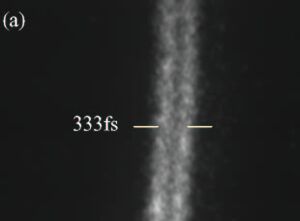

Figure 1: Characterization of the streak camera resolution. (a) the streak image of
two pulses separated by 333 fs with the accumulation of 6666 shots. (b) The lineout of (a).
An Accumulative X-Ray Streak Camera with 350 fs Resolution
Mahendra Man Shakya, Zenghu Chang
J.R. Macdonald Laboratory, Department of Physics,
Kansas State University, Manhattan, KS 66506, USA
Operating the x-ray streak camera in accumulation mode is critical for time-resolved experiments at the 3rd generation facilities because of the small number of photons emitted by each electron bunch. For characterizing x-ray free electron laser pulses, running the camera in accumulation mode avoids the space charge effect in the camera.
Previously, an accumulative streak camera with 580 fs resolution was developed through the collaboration between Argonne National Laboratory and our group. It was found that one of the main limitations to the temporal resolutio n of that camera was the deflection aberration when the scanning speed was as high as two times of the speed of light. A new streak tube was designed and constructed. It used a quadruple lens to focus the electrons in the scanning direction. The deflection aberrations were suppressed by reducing the electron beam size in the deflection plates with a slit.
The camera was tested using the Kansas Light Source, which produces 25 fs pulses. The repetition rate of the laser is 2 kHz with 1-2% RMS pulse energy stability. Figure 1(a) is the images of the two 25 fs pulses 333fs apart measured by the streak camera. The lineout is shown in fig. 1(b). The scanning speed was 2.8 times of the light speed. The time resolution of the camera is better than 350 fs by the Rayleigh’s criterion. To the best of our knowledge, it is the highest time resolution ever achieved by a streak camera operates in an accumulation mode.
Figures:


Figure 1: Characterization of the streak camera resolution. (a) the streak image of
two pulses separated by 333 fs with the accumulation of 6666 shots. (b) The lineout of (a).
This work was supported by the
Chemical Sciences, Geosciences and Biosciences Division,
Office of Basic Energy Sciences,
Office of Science,
U.S. Department of Energy.
Submitted to Ultrafast X-Ray Science, April 2004 in San Diegeo, CA.
This abstract is also available in Adobe Acrobat format.
| Return to do another abstract search of all our holdings. |
|
|